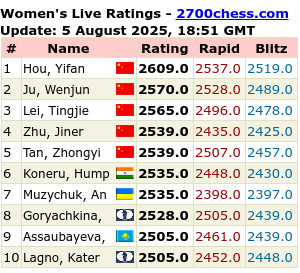Partly, I wrote this post to offset against this one on T47 openings ( I wouldn't want to be classified as an openings freak :) and to continue my exploration of T47, but also because I was interested in just what sort of endings are played in TL games ( especially compared to 'professionals') and maybe just a bit on trying to identify what endings I should concentrate on, to shortcut trying to work on them all.
Presentation was an issue, since, although endgames are classified, they aren't as straightforward as openings ( ie not recorded in the game notation ), but I used a 'standard' classifier in my database, so at least I present some sort of consistency.
Straight into things.
Below is a table of endings, showing type, games occurring and percentages, with an additional column given for the 2010 Gibraltar Tournament ( 8th GibTelCom Masters ) to compare with TL games ( it was a relatively random choice ).
It should be noted that one game can fall into many categories, since what begins, for example, as a Rook ending, may, via exchanges, switch to a pawn only ending. It's not, therefore, that one game has only one possible ending. Confusing possibly, but I think its correct
| Type | Description | Games | T47 % | GibTelCom2010% |
| I | Pawn Endings | 294 | 22 | 10 |
| II | Rook Endings | 374 | 28 | 45 |
| III | Bishop Endings | 162 | 12 | 11 |
| IV | Knight Endings | 127 | 9.5 | 9 |
| V | Bishop vs Knight Endings | 124 | 9 | 11 |
| VI | Rook vs Bishop Endings | 68 | 5 | 5 |
| VII | Rook vs Knight Endings | 29 | 2 | 2 |
| VIII | Queen vs Pawn Endings | 46 | 3.5 | 2 |
| IX | Queen vs Queen Endings | 47 | 3.4 | 2 |
| X | Queen vs Rook Endings | 19 | 1.5 | < 1 |
| XI | Queen vs Knight Endings | 10 | 1 | < 1 |
| XII | Queen vs Bishop Endings | 8 | 1 | < 1 |
How about looking at a few "truisms"...
Are opposite bishop endings drawn ? Well, in T47 the statistics aren't conclusive, but imply that it could be true-ish ! 22 games of this type and 10 are drawn.
Here's one that is definitely the case...
 |
| 52. Kb3 |
But here..
 |
| 54....g5 |
Are Queen and pawns vs Queen and pawns a draw ? It seems to be true. In T47, 16 of those, and 8 are drawn, including this one, proof that just because the most powerful pieces are left doesn't mean that a result is guaranteed.
 |
| 41. Qe4...Draw agreed |
Success in endgames other than the obvious and/or basic, is an area where the better prepared and practised player will benefit, much more so than openings, where mistakes are often recoverable. This is as true in Master play as in amateur.
But, since we (amateurs) don't know our endings in detail, we don't know how to win particular ones, but we do know how to win the basic one, namely King and pawns, hence we exchange to the minimum possible, and fight it out there.
I started out by suggesting that I wanted to try to identify the most common endings and see if I could short cut a way to prepare for them.
This isn't possible : there is not a short cut.
Certainly, I have identified that knowing Rook endings could provide benefits [ see this as a starter ] and if you know your pawn endings as well, together these cover 50% of T47 endings.
However, really it goes to show that in chess, be it professional or amateur, there are few short cuts : experience, practice and hard work are the only ways to be prepared and improve.
Time to break out the endgame books !



2 comments:
Interesting. There is a good statistical overview in the book from Mueller+Lamprecht, based on the Megabase 2001. The most common endgames were rook+minor piece vs rook + minor piece (15%) followed by rook vs rook (8%).
I find it quite difficult to study rook endgames. The basic positions are clear but when it comes to manoeuvering in almost equal positions you have to spend a lot of time to study them. As a happy patzer I rather do another round of tactics. In the last 10 games I had only 3 endgames so the motivation is not really high to do more.
In case you want to study rook endings, look at games from Rubinstein:
http://www.chessgames.com/perl/chesscollection?cid=1009298 or http://www.chessgames.com/perl/chesscollection?cid=1005118
I will "doff my hat" to M & L as being far more accurate, since they probably invested more time in it than me !
It is difficult to assess since you really need to go through all games, rather than use a classifier, at least to do it correctly. My only defence is that I used the same classifier to do the comparison.
All I can do/see is that not only do we amateurs not know our endgames too well, but we are limited in exactly the ones we do know !
An excellent point that only 30% of your games reached an ending...doesn't really inspire one to make an effort on them, and I too find them hard. Its much nicer to finish off in the middle game !
Rubinstein is also highlighted for his rook endings by Marin in his "Learn from the Champions" book.
Post a Comment